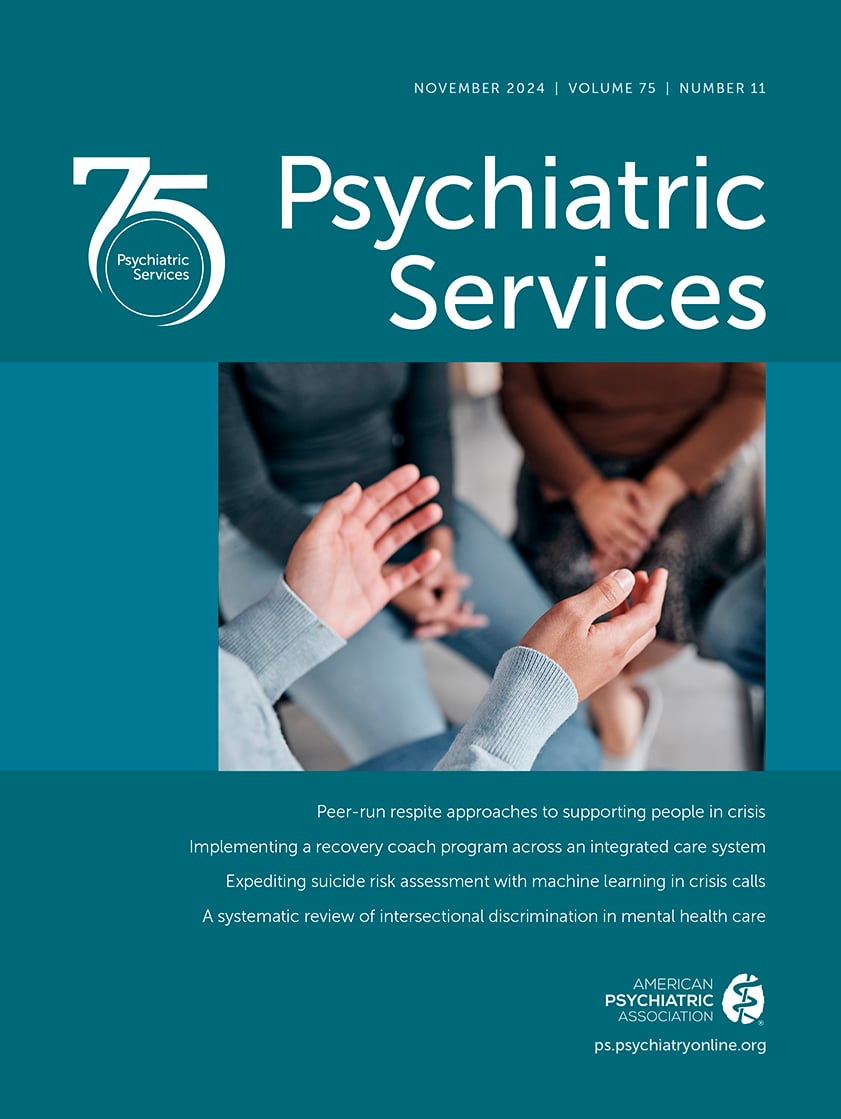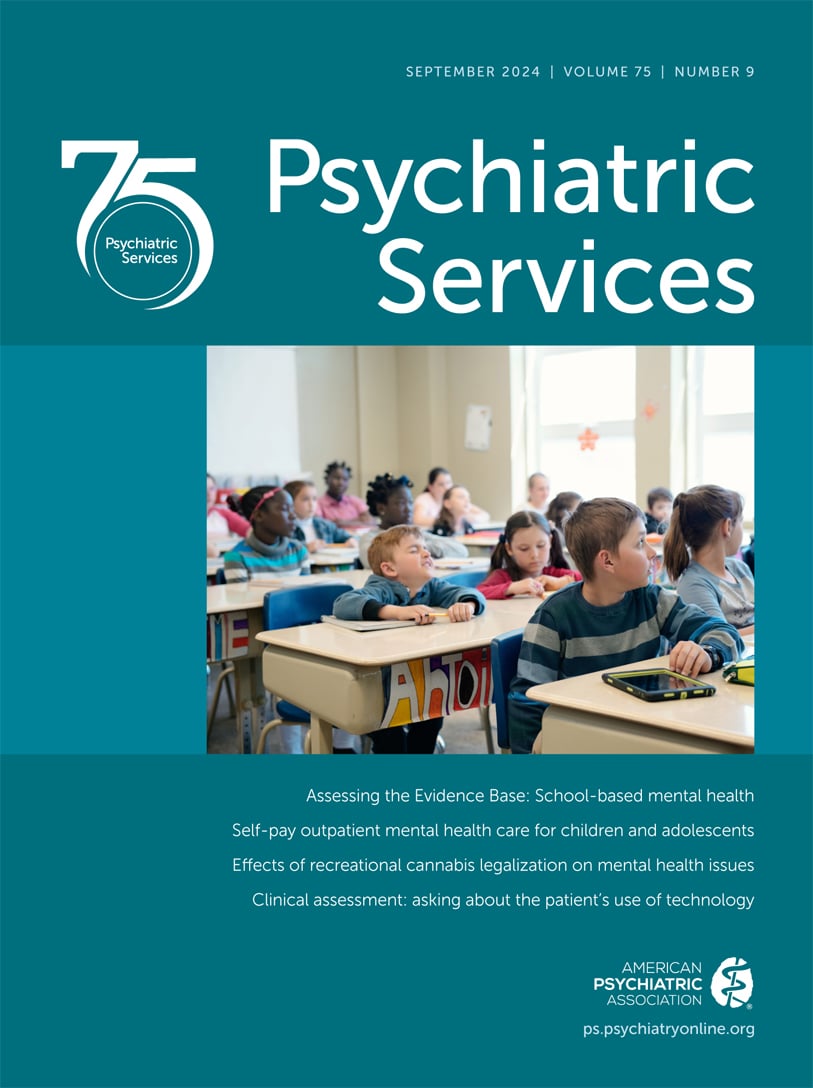Psychiatric Services
- Volume 40
- Number 9
- September 1989
Article
Publication date: 01 September 1989
Pages878–879The evidence accumulating from these recent careful studies suggests that care in the community is likely to be less expensive and more beneficial than institution-based care for many people with chronic mental illness. The cost savings are likely to be ...
https://doi.org/10.1176/ps.40.9.878Publication date: 01 September 1989
Pages887–889Although it is clear from research studies that some patients with borderline personality disorder improve following pharmacological treatment, their response to drugs may be unpredictable. Neuroleptics and carbamazepine may reduce impulsivity in some ...
https://doi.org/10.1176/ps.40.9.887Publication date: 01 September 1989
Pages905–907Dr. Mance, this month's guest expert, is assistant professor of psychiatry at Emory University School of Medicine in Atlanta and coprincipal investigator at the Emory site for the National Institute of Mental Health's multicenter study of treatment ...
https://doi.org/10.1176/ps.40.9.905Publication date: 01 September 1989
Pages909–915In a review of the current literature on inpatient psychotherapy, the authors discuss shortened length of stay and the interdisciplinary team approach as factors affecting psychotherapy in the inpatient setting. They examine the literature in the ...
https://doi.org/10.1176/ps.40.9.909Publication date: 01 September 1989
Pages916–920A central goal of policies aimed at improving care of the chronic mentally ill is better service coordination and integration. The author examines four current policy strategies—continuous care teams, local mental health authorities, integrated ...
https://doi.org/10.1176/ps.40.9.916Publication date: 01 September 1989
Pages921–927The presence or absence of neuroleptic-induced pseudoparkinsonism, the presence or absence of akathisia, and plasma levels of haloperidol are used to distinguish five types of haloperidol-resistant psychotic patients. The five types are patients receiving ...
https://doi.org/10.1176/ps.40.9.921Publication date: 01 September 1989
Pages927–932The treatment outcomes of 60 chronic mentally ill patients who received services at Community Care, a private-sector residential care program, were analyzed. In addition to psychiatric services, the program offers instruction in living skills and ...
https://doi.org/10.1176/ps.40.9.927Publication date: 01 September 1989
Pages932–936A case study of the community mental health work force in Nebraska over a seven-year period beginning in 1981 examined changes in the professional makeup, overall staffing levels, extent of professional training, and number of medical staff in both ...
https://doi.org/10.1176/ps.40.9.932Publication date: 01 September 1989
Pages937–942In May 1987 the Veterans Administration established the Homeless Chronically Mentally Ill Veterans Program at 43 sites to provide outreach, health care, and residential rehabilitation services. Intake assessment data on 10,529 homeless veterans screened ...
https://doi.org/10.1176/ps.40.9.937Publication date: 01 September 1989
Pages943–946Twelve predominantly psychotic patients who were at high risk for relapse and rehospitalization participated in a treatment regime that combined medication and supportive and insight-oriented group therapy. The group was studied over a 44-month period ...
https://doi.org/10.1176/ps.40.9.943Publication date: 01 September 1989
Pages947–951A variety of demographic and clinical data collected on 142 new patients treated in an adult psychiatric outpatient clinic were analyzed to determine factors that discriminated between patients who terminated treatment prematurely during the first eight ...
https://doi.org/10.1176/ps.40.9.947Publication date: 01 September 1989
Pages960–962This paper has described some inhospital strategies for dealing with problems caused by the delayed release of forensic patients. It is hoped that the paper will stimulate others to develop creative methods of addressing these problems. Clinicians working ...
https://doi.org/10.1176/ps.40.9.960Publication date: 01 September 1989
Pages963–964Although many therapists in the public sector might feel overwhelmed, anxious, or defeated by the unpredictable and difficult situations of the patients they encounter, others find a way to feel involved and challenged by these situations. The public-...
https://doi.org/10.1176/ps.40.9.963Past Issues
View Issues Archive
Vol. 75 | No. 11

Vol. 75 | No. 10

Vol. 75 | No. 9
